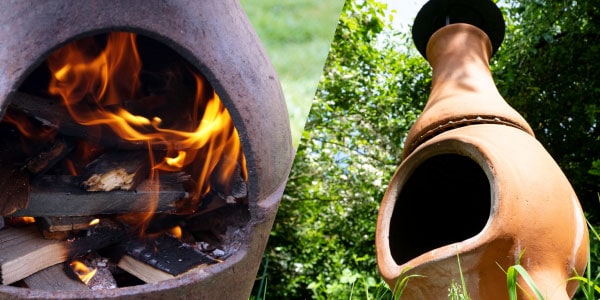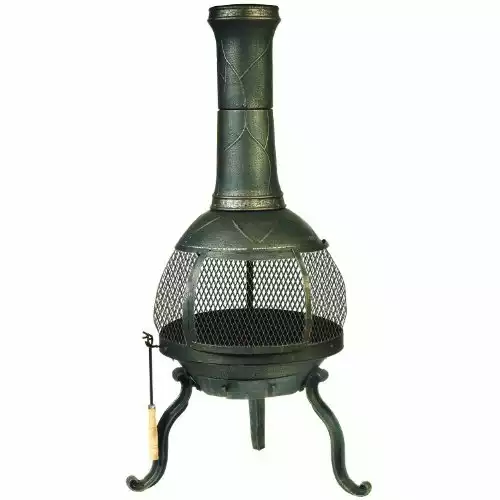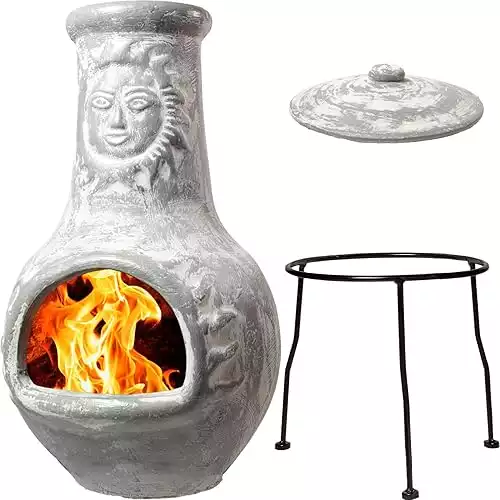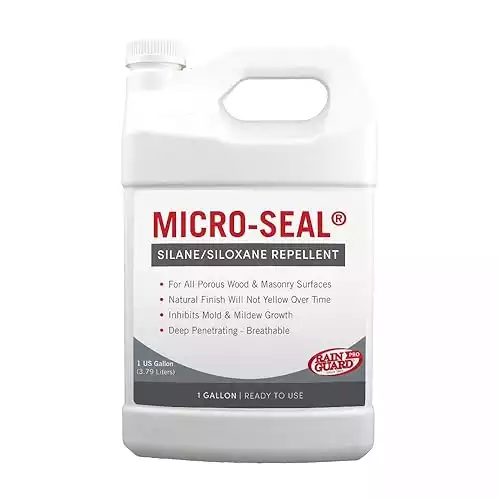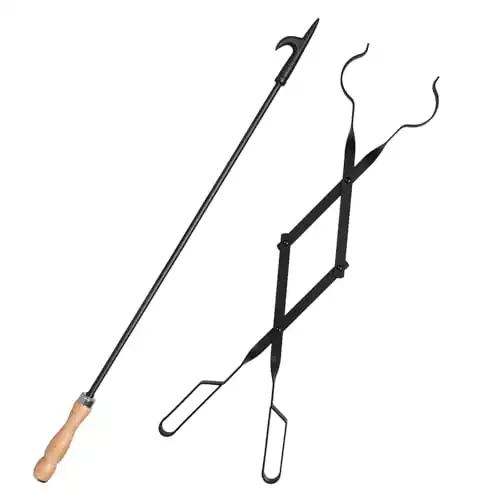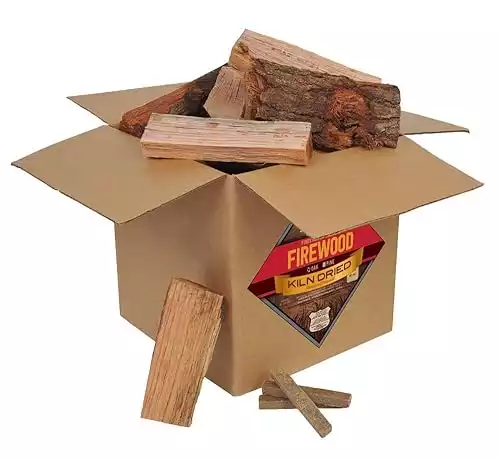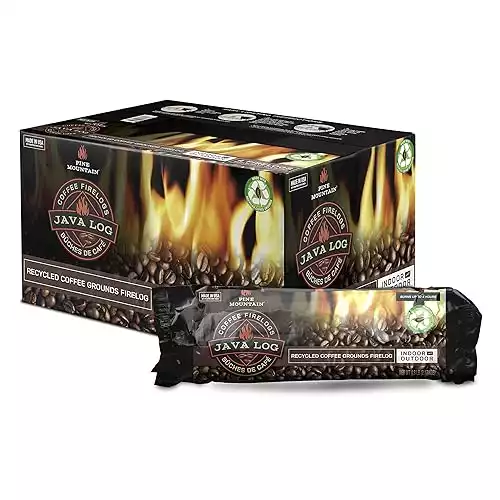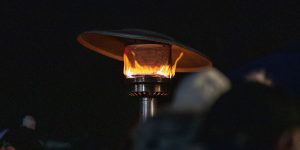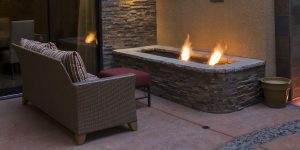
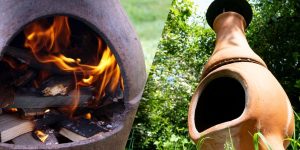
Nothing brings the whole family together around the hearth like a lively fire, some blankets and the stars above as decoration.
If you are looking at finding the best outdoor fireplace for your garden or patio, you’ll most likely be looking to buy a Chiminea, but what’s best?
Do you go for the beautiful high-maintenance clay Chiminea or the dangerously warm and sturdy cast iron Chimineas?
Because we don’t sell them, we are not looking at pushing you one way or the other. We take a look at the pros and cons of both types and let you decide which is the best Chiminea for you.
- Which is cheaper?
- Which is easier to assemble?
- How easy can I move my Chiminea?
- Which is easier to maintain?
- What is the safest Chiminea?
- Looks and Usability: Cooking and aesthetics
- Durability and Heat Output
What is cheaper: Clay or Cast Iron Fire Pits?
Generally, if you try and compare the cheapest clay chiminea and the cheapest cast iron chiminea, Clay will come out on top. Cast iron is more expensive than clay.
But as with most things you buy online, the cheaper you go, the more likely you are to get bad materials. So if you are going cheap, we could recommend you buy a cast iron outdoor fireplace instead – mostly because even the cheapest of this material will be more durable than a cheap clay pot that’s half baked and cracks in seconds.
The good news is if you go up one price range you can get good quality of both at very similar prices. In reality, if you are willing to spend the $£200 price range, you can find good quality of both.
Cast Iron Chiminea pros and cons:
- PRO: Cast iron is more durable than clay – if you are on a budget, you will get better value from a cheap cast iron fire pit chimney than a clay one.
- CON: Cast Iron Chiminea fire pits are generally more expensive than clay ones.
Clay Chiminea pros and cons:
- PRO: The cheapest Chimineas out there will be made of clay because clay is cheaper than iron.
- CON: Be careful when sourcing these, as cheap clay or construction means your clay Chiminea won’t last long.
And the winner is….
If you don’t have a big budget, find the best budget cast iron fire pit you can afford. It’s a safer bet and will last you longer.
Burn wood or artificial logs in this designer cast iron chiminea with a 360° fire view, mesh spark screen, sliding door, ash catcher, log grate, and fire tool—perfect for any patio or backyard.
What is easier to assemble?
There’s a clear winner here, without a doubt. Most Clay Chimineas tend to come as a maximum of two pieces, with maybe extra legs to stand on. Do you know what you then need to do?
You put the two pieces together and voila! Instant clay chiminea fire pit in your garden and patio.
It doesn’t take a genius to look at any kind of metal Chiminea to know it won’t be quite as easy. There will be bolts. There will be multiple pieces. There, might even be screws.
If you are not the DIY type, you know which one is for you.
Cast Iron Chiminea pros and cons:
- CON: Some assembly required. With manual. Get the tools ready.
Clay Chiminea pros and cons:
- PRO: Tools? What tools?
And the winner is….
Easy to assemble terracotta Chimineas are part of what has made these fire pits popular over the years.
How easy can I move my Chiminea?
If you start reading about the battle between what is the best material for a Chiminea, you’ll often hear this Chinese whisper: Cast Iron is heavy, Clay is easier to move around.
So are we saying that all Chimineas are as manoeuvrable as each other and you can take both for a spin wherever you want? No. If that’s what you want, go get yourself a portable garden heater instead.
You don’t want to move your Cast Iron or Clay Chiminea around. Find a nice focal point for it, put some nice furniture around, and make it a feature.
Because Cast Iron is heavy and Terracotta (whilst a little less heavy) is fragile. You don’t want to be moving it around and crash like Wile E Coyote in front of your guest, pretty porcelain pottery at your feet.
Granted, if you did want to tuck it out of the way for warmer summers, then Clay Chimineas are a little lighter and easier to shuffle out of the way. Just remove the top and transport as two pieces.
Cast Iron Chiminea pros and cons:
- CON: Heavy. So heavy.
- You can find cast iron chiminea fire pit bowls with steel flume. These are a little less heavy.
- PRO: Won’t break if you do have buttery fingers and it comes crashing to the floor mid-move. It may dent the decking though.
Clay Chiminea pros and cons:
- PRO: Lighter than Cast Iron Chimineas
- CON: More fragile. Realistically you don’t want to be doing laps with these, but move them a couple of feet out of the way at most.
And the winner is….
We have to say Clay Chimineas because they are lighter, and as they come in two easy to detach pieces, so can be made lighter still. But please be careful and keep movements at a minimum, and only move when cold.
What is easier to maintain: Cast Iron or Terracotta Chimineas?
Anything that has to resist a large amount of heat will require some maintenance. Whether it’s an indoor or outdoor fireplace, cleaning and upkeep is essential.
BUT there is no doubt that that Clay Chimineas are harder work. Mostly because you have to cure them first, meaning you have to build up small fires inside to build up the heat resistance. If you don’t your terracotta fire bowl will crack and that will be the end of that.
However, you can also buy a sealer to protect and give your clay Chiminea a longer life, and higher heat resistance. Once cured, your chiminea will last you for as long as Cast Iron.
However, with Cast Iron Chimineas you can just chuck as much fire or wood into the pot from day 1 and get going. There’s no curing, no waiting around, and you can even use coal, not just wood.
BUT Cast Iron will rust. You will need to clean it, oil it, and both need covers to protect against the elements in the long term. None are totally hassle free.
Cast Iron Chiminea pros and cons:
- PRO: Use from day 1, no curing needed
- PRO: You don’t have to worry about fire temperature or size as much
- CON: They will rust if not maintained properly
- PRO: Rust can be more easily cleaned
Clay Chiminea pros and cons:
- CON: You need to cure your clay Chiminea by starting small fires, little by little, and placing sands in the bottom of the bowl.
- CON: Prone to cracking if heat is too much without curing. You can’t fix a crack once it’s there.
- CON: You can’t pour water to cool it down. Quick cool down will lead to (you guessed it) cracks.
And the winner is….
There’s no doubt that if you want a low maintenance outdoor chiminea, cast iron is the way to go. Clay is a natural material, like wood and sand, and no one ever would leave glass tables and wooden furniture outside with no maintenance. Metal is simply a more forgiving material, but even they require some work.
What is the safest Chiminea?
Cast Iron Patio Chimineas have one big strength that is also its weakness. Because you can burn coal and hotter fires, and because it’s metal, it heats up fast and it heats up good.
But guess what? It cools down real slow, and because it burns high, if little hands touch it by accident, it’s going to lead to some serious ’emergency room’ burns.
Not just that but we would generally recommend getting a heat mat to place your cast Iron Chimineas as (due to the heat output) they tend to stain the surface beneath it.
Not so Clay. Clay don’t get as hot, but they tend to spread out a more even heat around them, meaning you can get closer without suffering burns. They also cool down faster, so if you forget you’ve only just put out the fire, you are less likely to need medical attention.
Cast Iron Chiminea pros and cons:
- CON: As they get extremely hot, they need a greater clearance around them
- CON: Hot iron cools down slowly – the burning danger is greater
- PRO: They are heavier meaning they are less likely to tip over
Clay Chiminea pros and cons:
- PRO: Clay cools off quicker than cast iron.
- PRO: Less likely to cause severe burns than iron
- PRO/CON: The bigger models are heavy enough that they won’t tip over. But if you buy a little clay chiminea, there’s a chance that a wrong place trip could see you sending your fire pit cracking to the floor. On the bright side though, you probably won’t get too badly burned.
And the winner is….
If you are concerned that certain members of your family not being able to be reasonable around a fire, then a clay or ceramic outdoor fireplace is the one for you. They cool down quicker, slightly safer for children and gives you peace of mind.
Durable wrought iron fireplace tool set includes a 32" fire poker and 26" scissor-style tongs for safe, easy log handling. Rust-resistant, foldable design perfect for fireplaces, fire pits, and wood stoves.
Looks and Usability: Cooking and aesthetics
When you buy a piece of furniture for your garden it doesn’t just have to be useful. It has to look good too. It’s all about style and function working together beautifully.
And when it comes to style it’s hard to beat a Terracotta chiminea. Depending on what you buy, these are usually hand-made and unique, some using technics from centuries gone buy to make lovingly crafted pieces of art.
However, because these tend to be sensitive to heat, they generally don’t come with grills unless you buy a large clay Chiminea. Then you can probably put some corn on the cob and salmon wrapped in foil on there, as long as you remember to go back and clean it the moment it cools down.
Cast Iron Chimineas may not be quite the work of art as their clay counterparts, but they can still come in all sorts of beautiful shapes and sizes, making them more versatile. From modern chimney flumes to the old-fashioned country-cottage stove, they can fit all styles.
Better yet, they are more forgiving and many come with a BBQ grill. Because metal has been used to cook with from the moment we started putting flint to stone.
We are happy to report that all the different types of Chimineas toast marshmallows beautifully.
Cast Iron Chiminea pros and cons:
- PRO: Great for cooking
- PRO: You can use coals, which means a hotter burn and easier cook all types of food
- PRO: More versatile designs to suit all styles
Clay Chiminea pros and cons:
- PRO: Beautifully crafted iconic Clay design
- PRO: Bigger sizes can accommodate some food grills
- PRO: Cooking with wood creates deliciously smokey flavours.
- CON: Less variety of styles available
- CON: More sensitive to heat so don’t cook anything that spits out hot juices
- CON: Cooking over wood in a small space tends to leave everything covered in charcoal if you don’t watch the flames.
And the winner is….
Despite the fact that we personally like the look of the Clay ones better, the Cast Iron garden Chimineas are just more versatile, both in style and usability.
Smoak Firewood offers USDA certified, organic, kiln-dried premium oak, free from chemicals. Ready to burn, it’s perfect for heating and cooking. Delivered to your door, fits Solo Stove, and made in the USA.
Durability and Heat Output
We will say that, if looked after, both types of chiminea materials will be durable and long-lasting.
If you buy a cover and maintain your materials, whether that’s using sealant or oil twice a year, you can have decades with your piece of equipment. If you don’t, one will rust and the other crack and that’s the end of that.
But let’s say, for argument sake, that you will look after your chiminea like it was your own flesh and blood – which will still be standing to be used in the apocalypse? Probably the Cast Iron chiminea.
Equally, its weakness in the safety concerns is its strength here. Cast Iron Chimineas by far have a higher heat output than the clay types, meaning they will warm up a larger circumference area without needing to be too close by.
Cast Iron Chiminea pros and cons:
- PRO: Cast Iron is more durable than Clay
- PRO: Less likely to crack or break
- PRO: Higher heat output
- PRO: You can use coal and wood
Clay Chiminea pros and cons:
- CON: If not properly maintained they will crack
- CON: Provide less heat than cast iron
- CON: You can only use a wood fire
- PRO: If maintained properly can provide you with years of use
And the winner is….
There’s no real contest here. Cast Iron chiminea wins.
What’s the best Chiminea material for you?
It’s a tight race, with Clay Chiminea taking 3/7 points, but ultimately the cast Iron Chiminea wins with 4/7 points.
In other words, depending on how you’ll use it and what you want out of your chiminea fire bowl, they each have their pros and cons.
Ultimately you need to decide what matters most to you.
Pick a Clay Chiminea if:
- You want a beautiful classic design in your garden
- You need to move it a few feet here and there
- You want to just burn wood on a cool evening
- You are happy to maintain and take the time to cure the chiminea
- You want a quick cooling safer chiminea for children and dogs
Pick a Cast Iron Chiminea if:
- You want heat and lots of it
- You want a more modern style and aesthetic
- You want to burn coal and wood
- You just need to buy a cover and clean it every so often
- You want to also use it to cook food
- You don’t need to move it once you’ve found the spot for it
Whatever you choose, you’ll find many happy hours sitting around a warm fire, the smoke flying off to the sky with the stars lightning your cozy evening for two. Or three. Or ten.
Top tip: use low moisture content wood (< 10%), coffee logs or eco-logs for a less smokey and more environmentally-friendly experience.
The Java Log is an eco-friendly firelog made from recycled coffee grounds, burning cleaner, hotter, and longer than wood, with fewer emissions. It's easy to light, burns for 4 hours, and is made from renewable resources.
FAQs
What are the main differences between a cast iron and clay chiminea?
A cast iron chiminea is made from heavy metal, offering durability and high heat retention. It can withstand extreme temperatures and is less likely to crack. A clay chiminea, on the other hand, is more traditional, often handcrafted, and provides a rustic aesthetic. However, it is more fragile and requires careful maintenance to prevent cracking.
Which type of chiminea lasts longer: cast iron or clay?
Cast iron chimineas generally last longer than clay ones due to their resistance to cracking, weather damage, and high heat. With proper care, a cast iron chiminea can last for many years, while a clay chiminea may deteriorate faster, especially if exposed to moisture and freezing temperatures.
Is a cast iron or clay chiminea better for heat retention?
Cast iron chimineas retain and radiate heat much more effectively than clay chimineas. They heat up quickly and stay warm for extended periods, making them ideal for cooler climates. Clay chimineas, while still effective, provide a more gentle and localized heat that dissipates faster.
Which chiminea type requires less maintenance: clay or cast iron?
Cast iron chimineas require regular upkeep to prevent rust but are otherwise low-maintenance. A simple coat of heat-resistant paint and occasional oiling can keep them in good condition. Clay chimineas need more careful handling, including sealing to prevent moisture absorption and ensuring they remain dry to avoid cracking.
Are clay or cast iron chimineas safer for outdoor use?
Both types can be safe if used properly, but cast iron chimineas get extremely hot, posing a burn risk if touched. They also tend to be heavier and more stable in windy conditions. Clay chimineas stay cooler on the outside and are less likely to cause burns but can crack under sudden temperature changes. Always place either type on a fireproof surface and keep flammable materials away.




